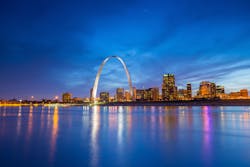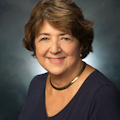Looking for Answers at the Station Design Conference in St. Louis
Have you ever built a fire station? Where do you start? Sketches or lists? Needs or wants. At what point do you think about the budget? Who should be on your building committee…or do you even want a committee?
New fire station projects or renovations are ongoing for metro and many career fire departments. Many departments plan to replace a 30- or 40-year-old station. One thing is for sure, every fire department has stories about fire stations.
We looked at the registered attendees for the 2023 Station Design Conference and reached out to ask several chiefs what their goals were for the conference. They shared their goals, and some might be relatable.
Conference goals
Goals prompted by more questions: How do you address sleep deprivation in designing a fire station? Hot zone designs reduce contaminants, but what about pathogens? Is building a 50- or 75-year station worth the cost?
Those are just some of the questions South Metro, CO, Fire Rescue (SMFR) Assistant Chief Kevin Milan hopes to have answered at the Station Design Conference, next month in St. Louis.
“We’re building a new station and have some very difficult challenges. Value engineering without impacting operations or firefighter health is our goal,” he said.
Another issue facing SMFR, and many other fire departments, is sleep hygiene. “It’s one thing to build a new station to promote sleep hygiene and quite another to remodel,” Milan said. “We developed a ‘manual’ to assist us in considering alternative solutions for HVAC, lighting, noise transmission, etc. for our legacy stations. I’m curious how others are addressing this problem which is at the core of almost every firefighter malady.”
A first-time attendee to the conference, Fire Chief Eric West, Bloomington, IL, Fire Department, explained, “Our department will be looking at building one to two stations in the next few years. None of my staff nor myself have been through the process of building fire stations so we are hoping to learn about the whole design process and how to manage the project. I am also looking forward to seeing or hearing about new innovations for fire stations.”
Cherokee County, GA, Fire & Emergency Services has eight members registered for the conference. The organization’s Public Relations and Recruitment Lieutenant Michael Sims explained their team is comprised of members who serve in various areas of their agency.
“Project managers, supply/logistics, code enforcement/compliance, and field operations,” Sims said. “A few of these team members are new to fire station design and we figure this will be a great place for them to learn and understand the process and programming we use to design stations.”
Cherokee County projects range from new construction to renovations. “We’ve been working since 2014 to replace older volunteer fire stations that weren’t built to house firefighters, with new state-of-the-art facilities designed to serve our agency for at least 50 years,” said Sims. “We’ve completed the replacement of four stations and have two under construction currently. We have at least four more stations to replace in the next six years along with several renovations.”
Climate-conscious Canadians
Among Canadian conference attendees is John Crozier, Deputy Chief, Capital Assets, Mississauga Fire and Emergency Services (MFES). He explained they have started an aggressive infrastructure renewal program. MFES developed a “Station Design Template” which sets the design standard for new stations.
“We currently have 21 fire stations we will be conducting major renovations to. Fifteen fire stations over the next 10+ years starting in 2023,” Crozier said. “The goal of the renovations is to achieve Accessibility for Ontarians with Disabilities Act (AODA) compliance, improve the facilities to accommodate two crews and two apparatus, include private washroom/shower facilities, create bunker gear rooms that are properly ventilated, and many other updates required for today’s modern service.”
Crozier added the department is working towards achieving the mandate as established in the 2019 Master Fire Plan, which includes adding six new fire stations over the next 10+ years. He said, “Currently, Fire Station 125 is in the construction phase, Fire Station 123 is in the design phase, and Fire Station 124 is in the planning stage.
The City of Mississauga is committed to a Climate Change Action Plan and one of the key design elements is to achieve Net Zero Energy. The Plan includes features such as the use of Photovoltaic (PV) panels, heat pumps, all-electric building systems and appliances, and other low-impact elements.
Designing on a budget
Volunteer fire departments face many challenges in planning a new fire station, perhaps the most serious is funding sources. Fire Chief Steven Evans, Yelleville, AR, Fire Department, explained their department serves a small, rural population of fewer than 3,000 people. Evans, along with the assistant and retired assistant chiefs, will attend the Station Design Conference to look for funding resources and construction options.
“We don’t have a major source of income for the department,” Evans said. “We will have to learn how to gain community support for a tax which no one wants to pay more of. We hope to gain knowledge of products to get the most for the taxpayers’ money. We hope to make lasting contacts with vendors for our future needs.”
Fire Chief Chad Cameron, Palmer, AK, Fire & Rescue, previously attended the Station Design Conference and enjoyed discussions with the architects about creating joint structures. Next month, Cameron will attend the conference with Palmer’s police chief and commander.
“We have been tasked with looking into the feasibility of building a joint police and fire station,” said Cameron. “We believe a joint building is in the best interest of our community.”
The Palmer leaders are in the very early stages of planning and need to identify funding—city, state, and federal funding--for their project. Cameron shared his personal goal, “I would like to come away from the conference with identifying one or two firms that have experience in areas similar to ours, building multi-use structures (police, fire, and possibly city management), and are interested in helping us along the process.”
Buying a new fire apparatus takes time and with long delivery schedules, a lot can change before it’s delivered. Similarly, building a new fire station is complex and more expensive. Start your homework early, learn the process, and be prepared for the unexpected. The Station Design Conference was created to help you.
About the Author
Janet A. Wilmoth
Special Projects Director
Janet Wilmoth grew up in a family of firefighters in a suburb of Chicago. Wilmoth, who is owner of Wilmoth Associates, worked with Fire Chief magazine for 27 years until it closed in 2013. She currently is the project director for Firehouse, overseeing the Station Design Conference.

